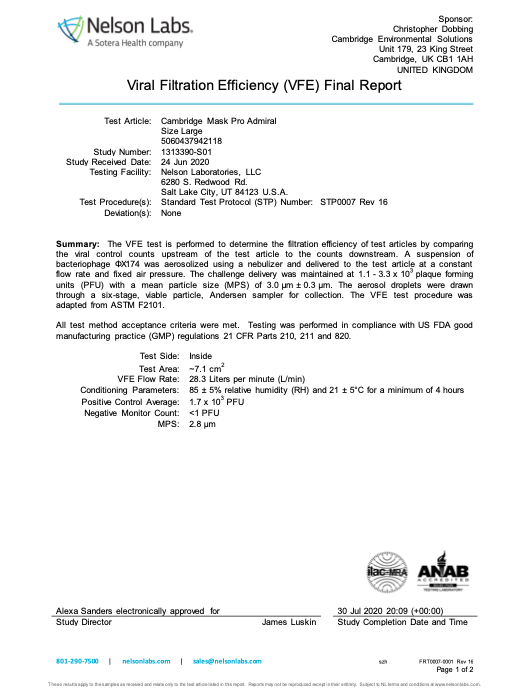The Viral Filtration Efficiency (VFE) test calculates the percentage of viral material that is blocked by the mask. Essentially, it tests the mask’s ability to filter out viruses in the air. A higher VFE means the mask is filtering out more of the viral material in the air. The PRO mask has an average VFE of 99.86%.
Viruses are even smaller than bacteria, with an average size of less than a millionth of a meter. This is why Plaque forming units (PFU) are used as the standard measure of concentration in virology. PFUs are groups or colonies of viruses that have the ability to harm cells. Due to the extremely small size of individual viruses and their tendency to form plaques, this test counts the number of PFUs that pass through the mask.
To test the VFE, a known number of PFUs is suspended in a mixture of air to mimic real-life conditions. The mixture of air and PFUs is pulled through the mask at a constant rate for a minimum of four hours.
The PFUs that passed through the mask are counted and then the VFE can be calculated by dividing the downstream CFU quantity by the initial quantity used in the air mixture.
If you have further question, please contact us by email at info@cambridgemask.com or Chat button on our sites to connect with our Customer Service Team.













